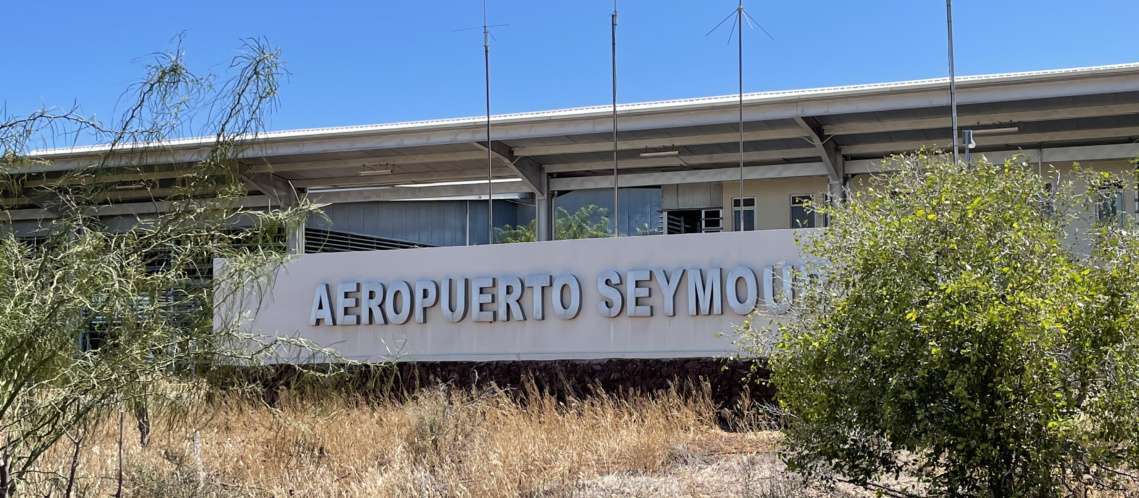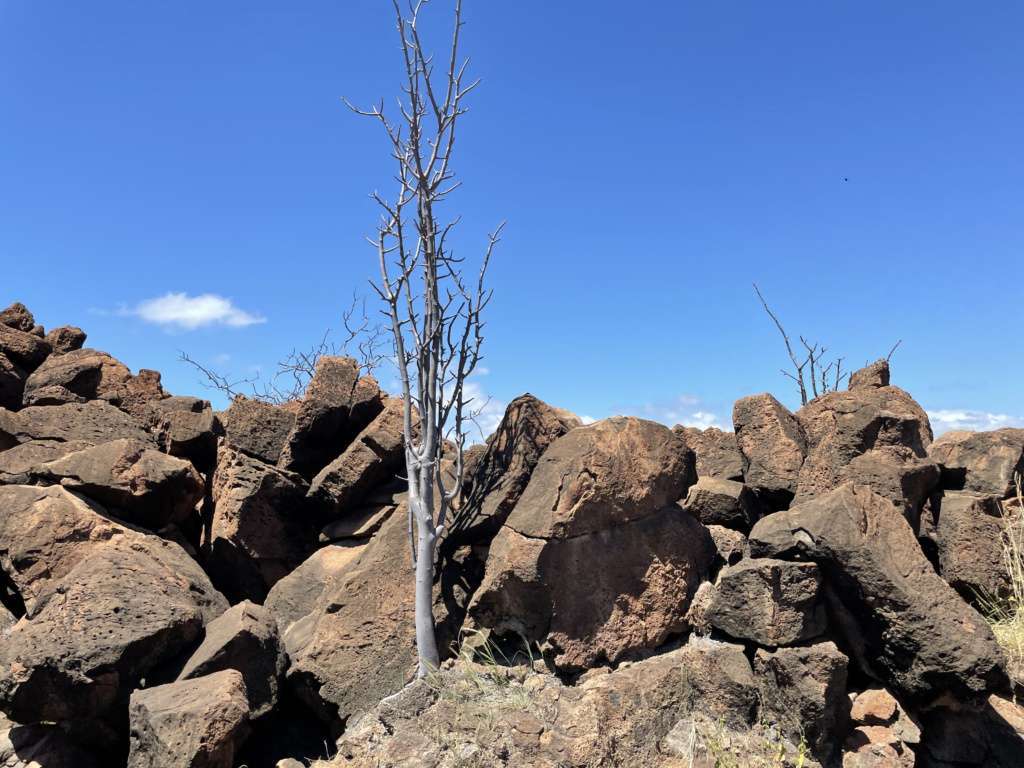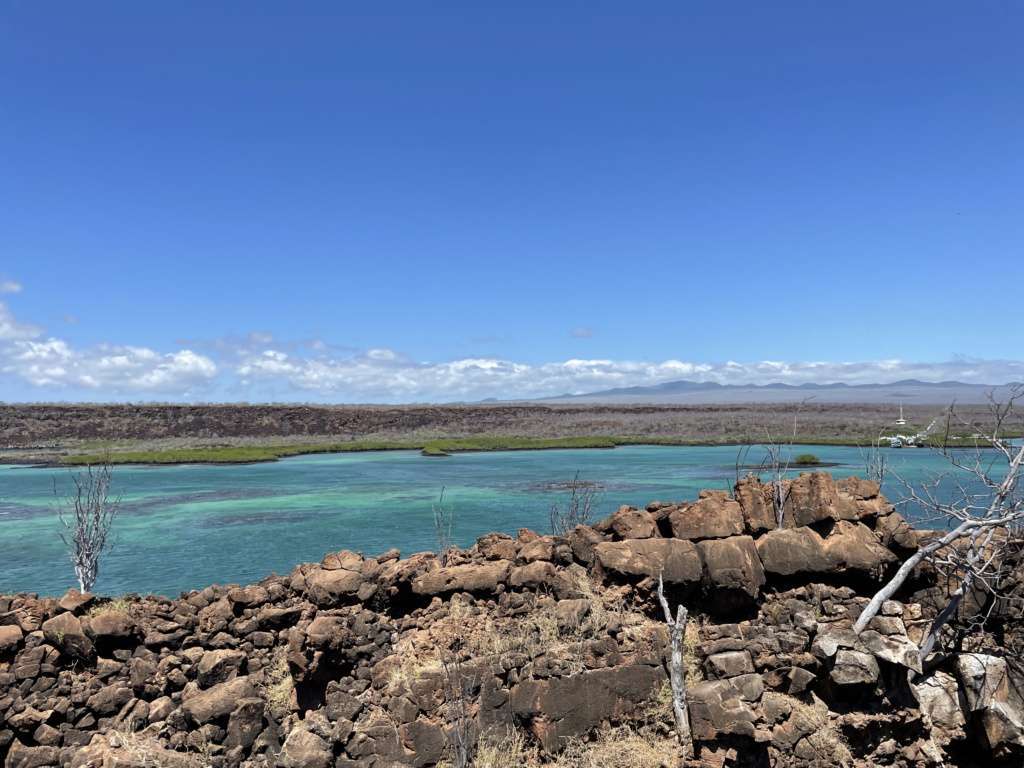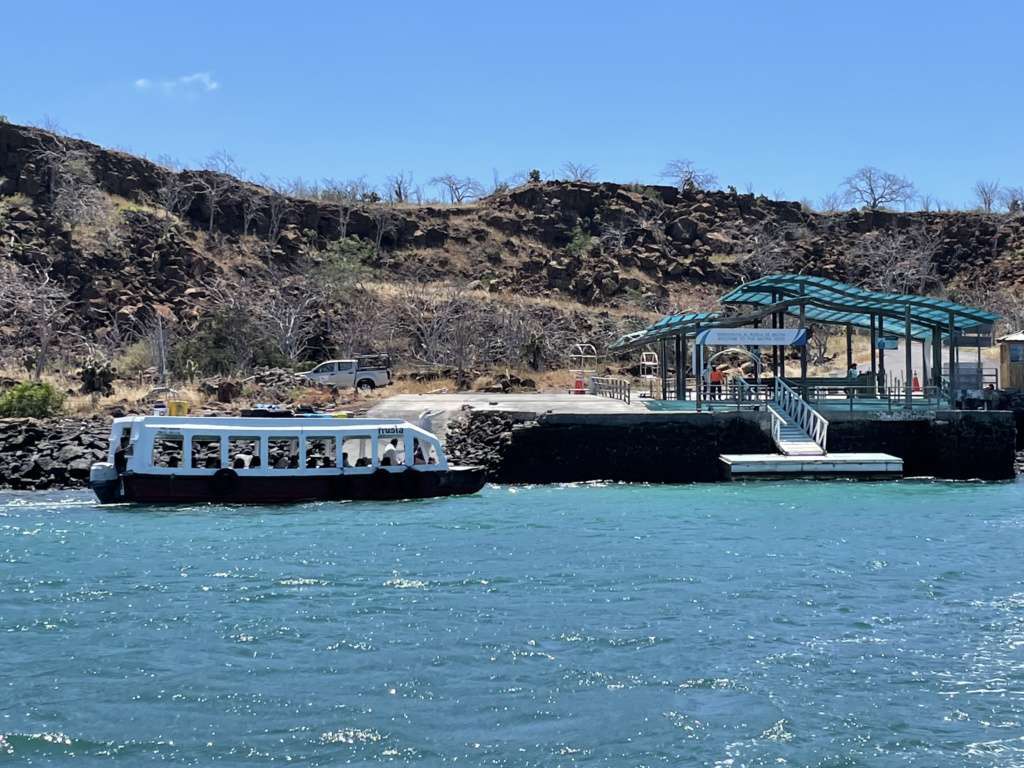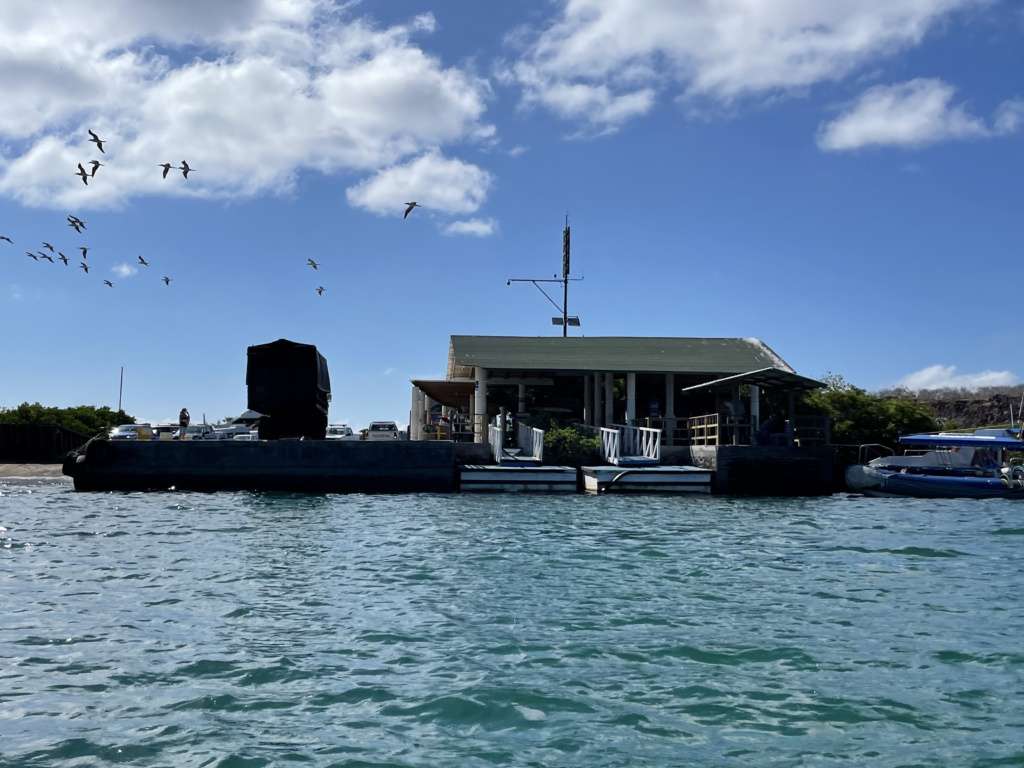To get to the Galapagos Islands, you can fly into either San Cristobal or Santa Cruz (Baltra Airport). The San Cristobal airport has the advantage of being closer to the main town on the island, whereas the journey from the Baltra Airport to Puerto Ayora in Santa Cruz requires a bus, ferry, and taxi. Despite this, we thought Santa Cruz was more central to the activities we were interested in and provided direct access Isabela so we opted to fly into Baltra.
Like many small airports, there are no jetways from the planes to the gate. When you arrive, you exit the plane directly onto the runway and walk to the terminal. We were immediately struck by the landscape. I’m not sure what I expected but I was surprised to find we were surrounded by cactus and rocky, desert-like terrain.
Upon entering the airport building, we had to go through a series of steps. While waiting on line, someone walked around and checked our temperatures and verified our PCR test results. Once we got to the customs desk, we showed our paperwork again, as well as our passports, and then paid the National Park Fee of $100 per person ($50 under 12 years old) in cash. We again put our luggage through the special screening before heading outside to start the next leg of our journey.
As much as the logistics of flying to the Galapagos seemed intimidating, getting from the airport to town was even more so. Buying tickets for the bus, getting on the bus, buying tickets for the ferry, getting on the ferry, getting a cab into town. It all seemed like a lot and I was worried about navigating the whole process.
Fortunately, we decided to book our transfers using book-ec and they made the whole process seamless. Not only did Johanna arrange a driver from the Itabaca Channel to Puerto Ayora but the driver actually met us outside the airport to help us navigate the bus and the ferry. It was a huge relief to step out of the airport and see him standing outside the door with a sign with our name on it.
He led us to the ticket window to buy tickets for the bus. It seemed odd to me that the airport bus wasn’t free, given that we were in the middle of nowhere, but I guess they knew they had a captive audience and took advantage of the situation. The bus cost $5 per person and was about a 10 minute ride to the channel. Our bags went in a compartment under the bus. This was the first of many times on this trip that our bags were out of our sight and we just had to trust that they would get from point A to point B.
The bus ride took us through desert-like areas and rocky terrain, where trees inexplicable grew out of rocks. When we came down the hill and around the curve and saw the beautiful blue water of the Itabaca Channel, the excitement on the bus was palpable. We were here. In the Galapagos. Starting an unbelievable adventure.
The next step was to take the ferry across the channel. When reading about this part of the journey, I didn’t know what to expect of the ferry ride. It ended up being a really short trip – you could easily see across to the other side and it almost felt like you could swim there if you were so inclined.
We went to buy the ferry tickets ($1 per person) and again trusted that our bags (which we did not see at this point) would make it from the bus to the ferry. We walked down the ramp to the dock and boarded the ferry. I was amazed to watch the bags get unloaded from the bus and onto a pickup truck, which then backed up to the ferry. The luggage was then loaded onto the flat top of the ferry and we headed across the channel with the bags on top.
We made it across and our bags magically reappeared from the top of the ferry. We headed to the taxi (almost all taxis on the island are white pickup trucks) and started the journey into town. It is a little over 25 miles and 45 minutes from the channel to Puerto Ayora, a trip that takes you through the highlands of Santa Cruz. Our driver dropped us off at the pier in Puerto Ayora, where we had some time to eat lunch and explore before catching the 3pm ferry to Isabela.
